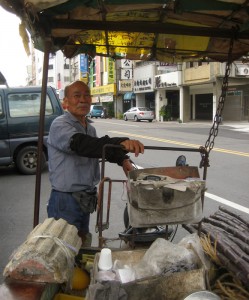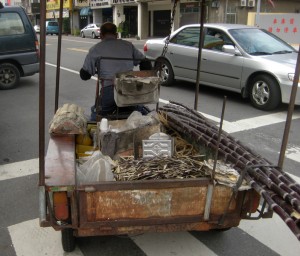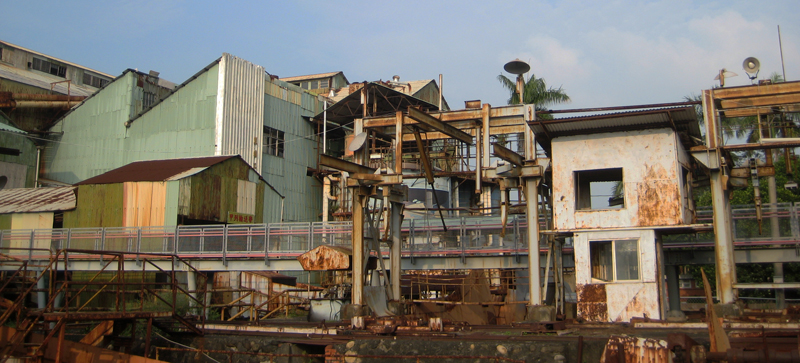
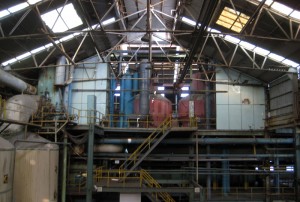
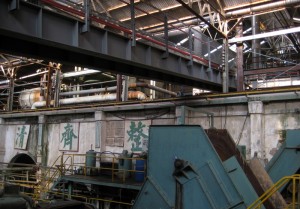
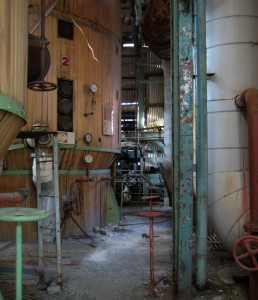 What we do not learn from museums about the history of Kaohsiung, we are told of on the street. The city has converted its port navigational authority building into a museum dedicated to history of traditional exports, salt, banana, and sugar. The sugar refinery (next to last stop on the red line), once responsible for producing 58% of GNP, is now being reassigned as a museum as well. Nothing has moved since the last day of processing, 2000 tons per day. Wild dogs rule the old dormitories for sugar refinery workers, and we have just missed meeting with a friend who is doing artist in residence at an old elementary school building.
What we do not learn from museums about the history of Kaohsiung, we are told of on the street. The city has converted its port navigational authority building into a museum dedicated to history of traditional exports, salt, banana, and sugar. The sugar refinery (next to last stop on the red line), once responsible for producing 58% of GNP, is now being reassigned as a museum as well. Nothing has moved since the last day of processing, 2000 tons per day. Wild dogs rule the old dormitories for sugar refinery workers, and we have just missed meeting with a friend who is doing artist in residence at an old elementary school building.
Closer to town, a hydraulic pump re-builder is upset that the government has removed a whole street of similar shops, one by one, and created a giant park. What can we do with a park, he questioned. We are creating container art just a few doors away on a pier that has been, itself, converted to public usefulness. A vendor on the curbside told me that old man collecting scraps of metal and paper is making more than $400/day in a motorcycle converted into a pickup truck.
Wishing to practice a few sentences of English, the street vendor tells me there was a time when this area was all American service men. They used to play baseball over in the park. “They were nice, patted me on the head and gave me candy” the gentleman said. The US helicopters patrolled the air, up and down the pier, and shipping container gained popularity delivering supplies during the Vietnam War.
Back in the National History Museum in Kaohsiung I learned during the time of Japanese occupation that sixty percent of the factories in the area were bombed by b24’s. Later on, a hardship which led to a severe crackdown of the educated class by the new government results in the most tragic massacre in the post-war Taiwan history, the 228 incident. In 1947, a group of high school students in Kaohsiung did something unimaginable and yet their innocent bravery reminds me of the spring revolution in Egypt, 60 years later. Students from the Kaohsiung municipal senior high school organized self-defense Forces to protect the town, the school, and the city hall (now the Kaohsiung History Museum). An attack was ordered by the nationalist army military commander in the area. More than 60 people including city councilors were killed during the attack. The unarmed, young, deputized high school students, left behind to protect, were killed by the army. A very bitter piece of history!

